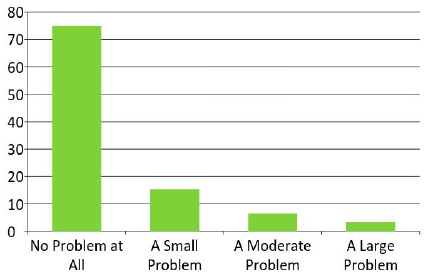ShaNae Foster and Mikaela Dufur, Sociology
Introduction
Over the years, family structure has become a topic of great interest in the social science community, particularly as it pertains to family structure type (i.e. biological parents, cohabiting, stepparents, etc.) (Dufur et al., 2010). More recently, family stability has come under scrutiny. Family structure has the potential to change over time, whether it be experiencing a disruption (going from married parents to single) or reconstitution (going from single parent to married or having a partner). We find interest in family structure changes over time as it pertains to its potential effects on their children’s sleeping behavior (Wong, Brower & Zucker, 2004). Young children’s sleeping behaviors provide an accurate predictor for boys’ marijuana, alcohol, and cigarette use, as well as girl’s alcohol use. Irregularities in early childhood sleep schedules provide accurate predictor of young children’s anxiety, and adolescent anxiety and depression mental disorders (Ong et al., 2006).
Our research is testing the potential relationship between family stability and children’s sleeping behaviors using a multidisciplinary study conducted by the United Kingdom, known as the Millennium Cohort Study. We predict that the more disruptions a family experiences the more sleeping behavior problems a child will have.
Methodology>
In our research, we examined the potential relationship between the number of family disruptions and early childhood sleeping behaviors. We did this using the United Kingdom Millennium Cohort Study (MCS), a multidisciplinary survey starting in the year 2000 with a sample size of 19,000 families and children. Utilizing data from the parent assessment of the Sleep Habit Problems section of the MCS dataset (children’s age 9 months, 3 years, and 5 years), we ran a series of ANOVA and ttests to examine the variance in group means and therefore determine a potential relationship between family stability and children’s sleep behaviors. *Source
Results
Our results showed that, in the UK, most children in the at the age of 5 years live with two parents with no disruptions. Our results also showed that most children by the age of 5 years have no sleep problems. However, children living in a two parent household had less sleep problems than did those living in a single parent household.
Discussion
Our research conducted with family structure, family stability, and sleeping behaviors with MCS data is part of a larger study exploring the crossnational comparisons of family stability and early childhood behavior outcomes. Said study will control for additional variables, such as mobility and socioeconomic status. Though the data shows evidence contrary to our hypothesis, the relationship between sleep problems and the number of adults in a household provide compelling evidence for the effect of family structure on early childhood behavior outcomes.
Conclusion
Family structure and stability have been under scrutiny by the social science community for some time. Sleep behaviors have also been a topic of interest and provide accurate predictors of alcohol, marijuana, and cigarette use among boys, and alcohol use among girls (Wong et al. 2010). Sleep behaviors are even associated with childhood anxiety, and adolescent depression and anxiety disorder (Ong et al. 2006). However, how the relationship between family stability and its relationship with children’s sleep outcomes has never been looked into. We predicted that the number of disruptions a child experiences in its family structure would affect a child’s sleeping behaviors.
After careful analysis, we lacked sufficient evidence to conclude that the number of disruptions a child experiences in its family affected their sleeping behaviors. However, our results provide compelling data for future research that can potentially aid in discovery for other crossnational studies.
Resources
- Dufur, Mikaela J., Nyssa C. Howell, Douglas B. Downey, James W. Ainsworth, and Alice
- J. Lapray. 2010. “Assessing Structuralist versus Individualist Explanations for Sex
- Differences in Behavior by Comparing SingleMother and SingleFather Households.” Journal of Marriage and Family 72(5): 1092-1106.
- M. Wong, Kirk J. Brower, Robert A. Zucker. 2010. Erratum to “Childhood sleep problems, early onset of substance use and behavioral problems in adolescence” Sleep Medicine 11(1): 110-111.
- Ong, Say How, Priya Wickramaratne, Ming Tang, Myrna M. Weissman. 2006. “ Early childhood sleep and eating problems as predictors of adolescent and adult mood and anxiety disorders” Journal of Affective Disorder 96(1–2 ): 1–8.

